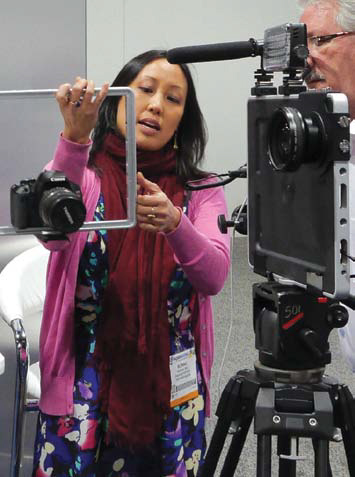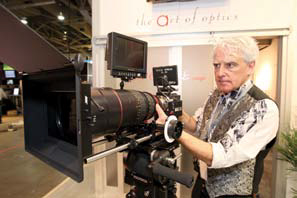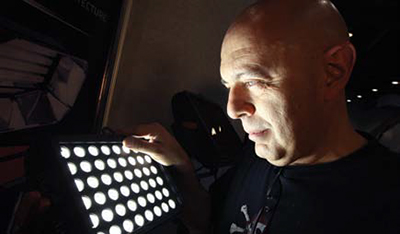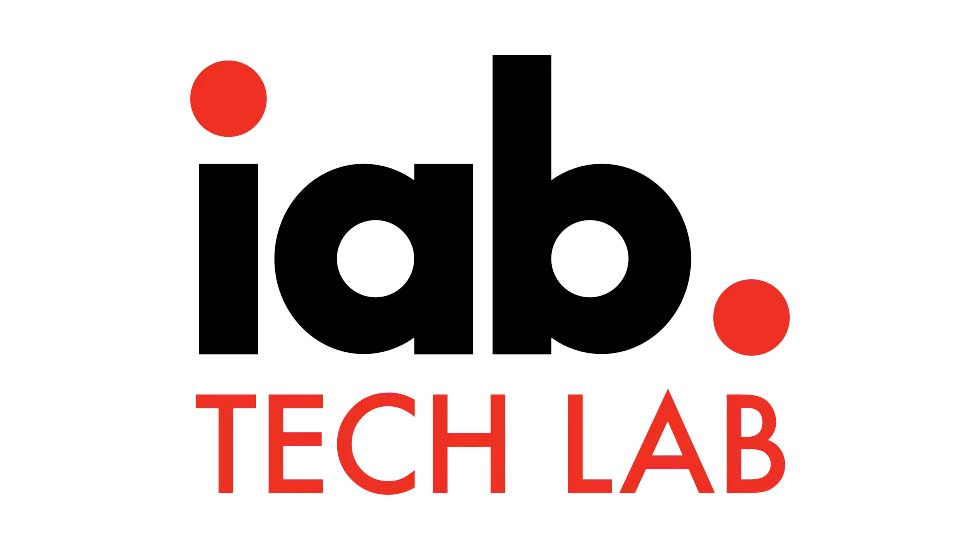2014 NAB Explores Current Issues

LAS VEGAS—A tumultuous mix of issues has rolled over the video media industry during the last 12 months, from overwhelmingly emotional moments on the slopes of Sochi to biting battles on the steps of Capitol Hill. By default, the annual NAB Show—which takes place here, April 5–10—acts as a breathing point for all that progress and tumult, serving as a spring barometer of all that the industry has achieved and a reminder of how far it has to go.
REBOUNDING MARKETPLACE
Despite the fragmenting of markets and struggle for viewers, one thing has become clear in the 12 months since the last NAB convention: Broadcasting still has the power to dazzle and dominate. The big networks were able to tick off viewership in the millions for one major broadcast-covered event after another: the Olympics, Oscars and live musicals like NBC’s “The Sound of Music Live!” The entire industry is settling into a more genial give and take relationship—one that bonds together over-the-air TV with the small handheld devices that once threatened to undermine it. Search for the term “Ellen breaks Twitter,” and up comes the most widely tweeted image in the history of the technology— retweeted more than 3 million times in less than 24 hours—yet it was broadcasting itself that captured that goofy moment, and allowed it in time to be immortalized in the ether.

“The television marketplace has really rebounded,” said Dennis Wharton, executive vice president of communications for NAB. “Four or five years ago, people were not very positive. Now, people are realizing the value of television in terms of being a steady provider of cash flow.”

Amazon Web Services’s Mark Ramberg will keynote the NAB’s Media Management in the Cloud Conference. As the show evolves from its roots as a broadcast-specific stomping ground to one that addresses all aspects of the professional video industry, it’s attempting to stretch its arms even wider. It wants to be seen as the penultimate stomping ground for any professional that creates, manages or distributes entertainment across any platform.
That’s a wide net to cast.
VIEWER LOYALTY
To illustrate how vital these different facets have become, NAB plans to welcome in representatives from various corners of the industry, even those that can reliably be called the competition. That’s most likely due to the frustrations of trying to answer one simple but elusive question: How do you keep viewers engaged and encourage their loyalty in an era where viewing habits are parsed and pulled apart by the domination of disruptive media?

To counter, the NAB Show will pull from the lands of digital cinema, post production, IT and streaming media, with a healthy dose of policy thrown in.
The professional video industry's #1 source for news, trends and product and tech information. Sign up below.
True to form, much of the show remains centered around technology, with this year’s spotlight set on high-resolution technologies. Among the big news is the announcement that the Japanese broadcaster NHK will demonstrate 8k Super High Vision on a single 6 MHz channel, the first demonstration of its kind outside of Japan.
Dozens of companies will also introduce new Ultra HD technology solutions, including Panasonic, who made headlines with the release of a 4K version of the company’s VariCam camera. The technology seems to be destined for every other booth on the show floor—as the key feature in the Blackmagic production camera; as a feature within EVS’ XT3 media production server; as a function in Grass Valley’s Kayenne and Karrera production switcher lineups.
New pockets of innovative new technology will find a home in new spaces as well, such as the new Interactive Television Pavilion that is designed to show how technology is being used to provide personalized video experiences through TV, mobile devices and gaming systems.
At the Disruptive Media Conference, the issues will swirl around just that: How the digital and interactive divisions within any media entertainment company can better tap and hold on to consumers. Keynote speaker Roy Sekoff of The Huffington Post will look at the how the rise of online video—and viewers’ desire to get engaged with content—is impacting programming, distribution and advertising.

CLOUD EXPLOSION
The organization is also taking note of the explosive interest in cloud technologies, and will give Amazon Web Services’s Mark Ramberg the mic to keynote the NAB’s Media Management in the Cloud Conference, where he’ll discuss how cloud services have allowed media and entertainment companies to address a particularly high-flying promise: How to offer consumers content at anytime and on any device. Since last NAB the technology has stayed in the headlines; this year, it remains to be seen whether concerns over reliability and security have been sufficiently resolved.
“We’re beginning to see the cloud used in a couple of different instances,” said Keith Wymbs, whose company Elemental Technologies, has seen notable growth over the last year based on the continued efficiency and flexibility of cloud technologies.
Cloud technologies offer delivery speed and a time-to-market option that haven’t been as feasible as with other types of delivery technologies, he said. “[New companies] can use the cloud to get through an innovation learning curve without devoting full capital resources,” said Wymbs, who is CMO for the Portland, Ore.-based company.

Ellen DeGeneres’ Twitter selfie at the Oscars quickly became the most retweeted photo in history.
The cloud also has the benefit of speed: customers can customize content that is broadcast over a traditional outlet by creating micro-targeted content that pinpoints a very specific region, similar to what the BBC started last year with its elastic cloud computing initiative as well as NBC’s HD and ondemand streaming of the Sochi Olympics via cloud technology.
The cloud has made such an impact in the last 12 months in part because of its wide reach: cloud-based solutions have the ability to impact each stage of content distribution, including production, delivery and storage. In addition to the two-day Media Management in the Cloud conference, sessions will look at workflow issues, storage and ongoing security concerns.
CONSOLIDATION AND THE COURTS
As the industry grows, it is also consolidating, and the results of one of the biggest mergers are yet to be felt. In February, Comcast announced plans to purchase Time Warner Cable for $45 billion. Pending regulatory approval, the combined entity would be the nation’s most dominant provider of television channels and Internet connections.

The NAB has also had its share of battles on its hands, most recently with the Internet service Aereo, which captures free over-the-air television signals and streams them directly to paying subscribers. In early March, the Justice Department ruled that the Aereo system is “clearly infringing” on broadcasters’ copyrights. The case will be heard at the Supreme Court in April—just days after the show—and its ruling could have wide-ranging ramifications on Internet streaming, cloud-based storage and DVR devices.
“We’re giddy,” said the NAB’s Wharton when asked about the upcoming Aereo court battle. “This has the full weight of the Solicitor General on a court case that is beyond critical for broadcasters. Obviously the Solicitor General agrees that Aereo, despite their clever Rube Goldberg contraption, is a copyright infringer.”
Susan Ashworth is the former editor of TV Technology. In addition to her work covering the broadcast television industry, she has served as editor of two housing finance magazines and written about topics as varied as education, radio, chess, music and sports. Outside of her life as a writer, she recently served as president of a local nonprofit organization supporting girls in baseball.

